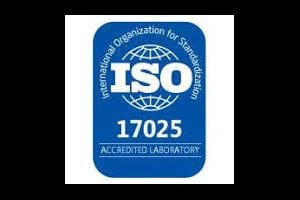Contact us
Live Chat with Tek representatives. Available 6:00 AM - 4:30 PM
Call us at
Available 6:00 AM – 5:00 PM (PST) Business Days
Download
Download Manuals, Datasheets, Software and more:
Feedback
Distribution and Transit Testing for Product Packaging
Will your packaging stand up to the rigorous distribution process?
Simulating the conditions of the distribution and storage environments allows you to be confident that your products arrive the hands of consumers in good condition. Package testing saves you time and money. By minimizing damage in the shipping process, you can reduce time spent with damage claims, cut the amount of lost product, and increase customer satisfaction. Tektronix labs are ISO/IEC 17025 accredited and ISTA certified. Tektronix is a member of the Amazon Packaging Support and Supplier Network (APASS) and is certified by Amazon to provide ISTA 6-Amazon.com package testing for products being sold on Amazon's website. Tektronix is also compliant with a variety of industry-specific standards, including:
- ISTA
- ASTM
- IEC 68-2
- GR-63
- RTCA/DO-160
- ASTM D4169
Tektronix has the right experience and equipment to perform quality package testing services for:
- Medical Device Manufacturers
- Consumer Goods Manufacturers
- Manufacturers in FDA Regulated Industries
- eCommerce Companies
ISTA Certified Package Testing Laboratory
Tektronix is certified by the International Safe Transport Association (ISTA) to perform a variety of package and transportation tests to provide a laboratory simulation of the damage-producing forces and conditions of transport environments. Manufacturers that have their packages tested at an ISTA certified laboratory are allowed to mark their packaging with the ISTA Transit Tested Certification Mark. Tektronix is certified to perform the following tests:
1A
1B
1C
1D
1E
1G
1H
2A
2B
2C
3A
3AV
3B
3E
3F
3H
Simulating the Process of Distribution
Package testing is the simulated process of distribution and storage of products that need to travel from the manufacturer to the end user. Packages can be described as an exterior container, cushioning or protection material and/or the product itself.
Package testing is relevant for clients who want to consistently deliver their products to market on-time and in compliance with industry regulations. It is the manufacturer's responsibility to evaluate each package's ability to protect the product inside throughout the handling, distribution and storage process.
Package fragility is a concern for most of our clients. Tektronix can simulate virtually every condition packages will undergo during warehouse or distribution processes. We have equipment to test shipping cartons, point-of-purchase (POP) displays and pallets.
The two most popular situations tested are shipping and storage:
- Shipping - Tektronix can simulate various vibrations, temperatures and unpressurized altitudes that products will encounter.
- Storage - Tektronix can simulate various conditions that happen during storage such as stacking, impact/shock and dropping.
Tektronix also tests to unique requirements or special environmental circumstances such as fungus, salt fog or UV/sunlight exposure.


Which Package Tests Do I Need?
To determine which tests are appropriate for your package system, you will need to consider a combination of factors including regulatory requirements, applicable standard(s) or test procedures, mode of transport, type and category of product in the container, size and shape of the container, and the container material make up.
Testing your packaging before it goes to your customers can save you money, reduce your liability, and increase your credibility and professionalism with your clients. Tektronix serves leading companies and government agencies with a wide array of package testing services, including:
- Bounce
- Compression, Machine
- Compression, Dead Weight
- Drop Test
- Vehicle Simulation
- Fragility
- Storage Test
- Thermal Shipper Validation
- Shipping
- Label Rub & Peel
- Stacking
- Vibration (sinusoidal/random)
Accelerated Aging or Shelf Life Testing
Shelf life testing must be performed to ensure that your products will survive in storage for periods of time and maintain their safety and efficacy. Claims about the shelf life or your product must be validated by data obtained during testing. Accelerated aging testing is used to produce initial conservative estimates of a product’s shelf life. Accelerated aging is a type of testing that utilizes extreme temperature, humidity, vibration, and other types of environmental factors to artificially speed up the normal aging process. The known reactivity relationships between the environmental conditions and the materials being testing combined with the test conditions are used to estimate the shelf life. The shelf life that is determined during accelerated aging should be validated with real-time testing. The standard used to complete shelf life testing is:
- ASTM F1980 - Accelerated Aging of Sterile Barrier Systems for Medical Devices

Featured Content
Accredited Testing Lab Locations

Tektronix testing services labs are ISTA certified to perform a variety of tests.

Tektronix is certified by A2LA as an ISO/IEC 17025 Accredited laboratory. View Certificate...
Frequently Asked Questions (FAQ) about Package Testing
What is the role of package testing?
Package testing plays a crucial role in ensuring the safety, integrity, and functionality of packaging materials. It involves subjecting packages to various tests and evaluations to determine their ability to withstand the stresses of.
How do you test packaging?
Packaging can be tested using a variety of methods and techniques, such as physical tests (compression, drop, vibration), environmental tests (temperature, humidity), leak tests, and functional tests. These tests help evaluate the performance and reliability of packaging under different conditions.
What is package level testing?
Package level testing refers to the testing conducted on individual packages or units of packaging. It involves assessing the specific package's ability to protect and preserve its contents, withstand external forces, and meet relevant industry standards or regulations.
What are the advantages of package testing?
Package testing offers several benefits, including:
- Ensuring product safety: It helps identify potential weaknesses or vulnerabilities in packaging, preventing damage to products during handling or transportation.
- Enhancing product quality: Testing helps improve the design and functionality of packaging, leading to better product protection and customer satisfaction.
- Compliance with regulations: Package testing ensures adherence to industry regulations, standards, and certifications, enabling businesses to meet legal requirements and avoid penalties.
- Cost reduction: By identifying and addressing packaging issues early on, companies can reduce product losses, minimize returns, and optimize their supply chain operations.
What is the role of package testing in the design and planning process?
Package testing plays a crucial role in the design and planning process by providing valuable insights into the performance of packaging materials and designs. It helps identify potential flaws or areas for improvement, allowing designers to make informed decisions and create packaging solutions that meet the specific requirements of the product and its intended environment.
What test is required for all types of packages?
While specific testing requirements may vary depending on the type of package and its contents, one test that is generally recommended for all packages is the drop test. The drop test assesses the package's ability to withstand impact forces during handling and transportation, simulating scenarios where the package might be dropped or subjected to sudden shocks. This test helps evaluate the package's durability and ability to protect the contents from damage.



